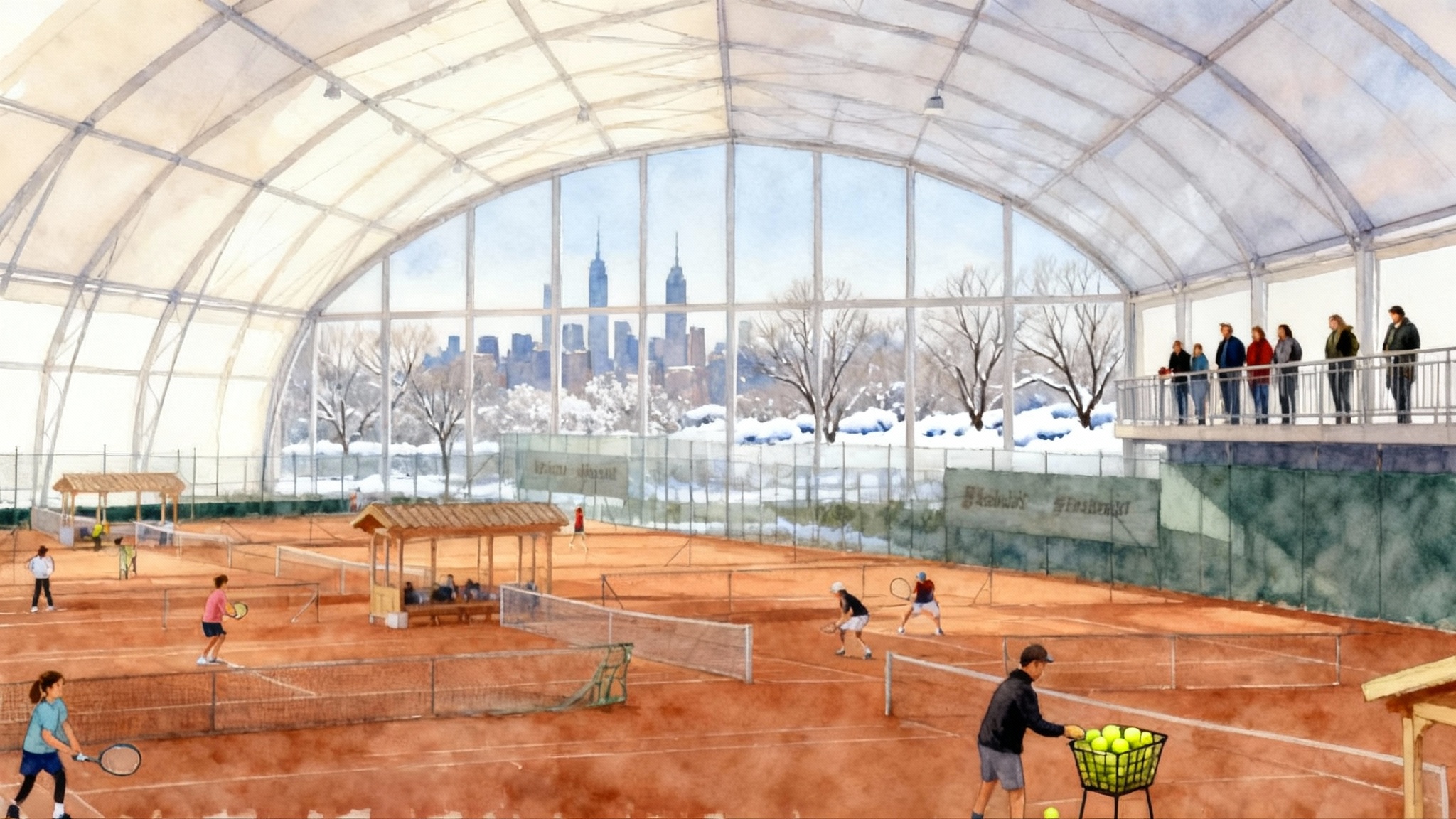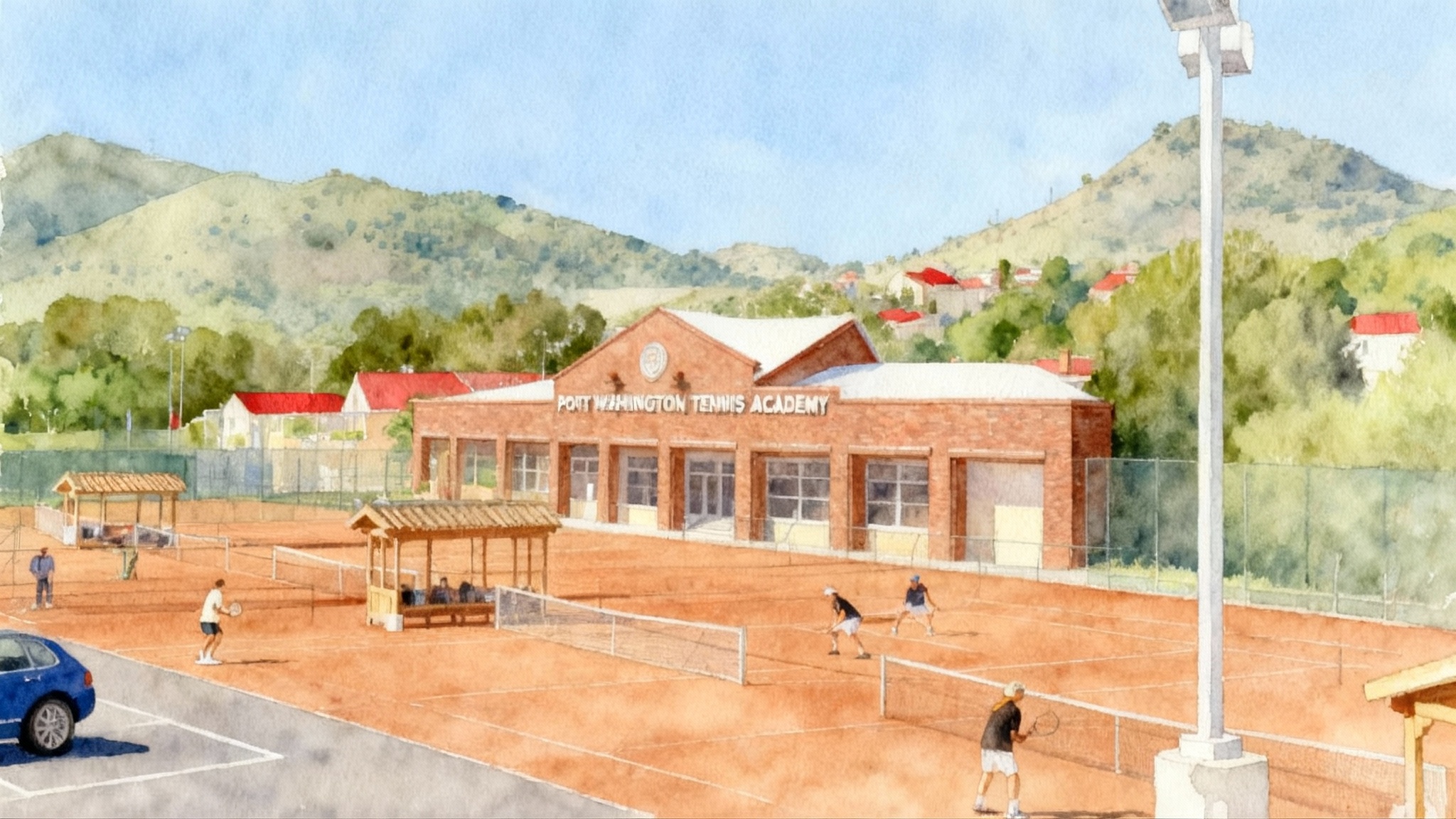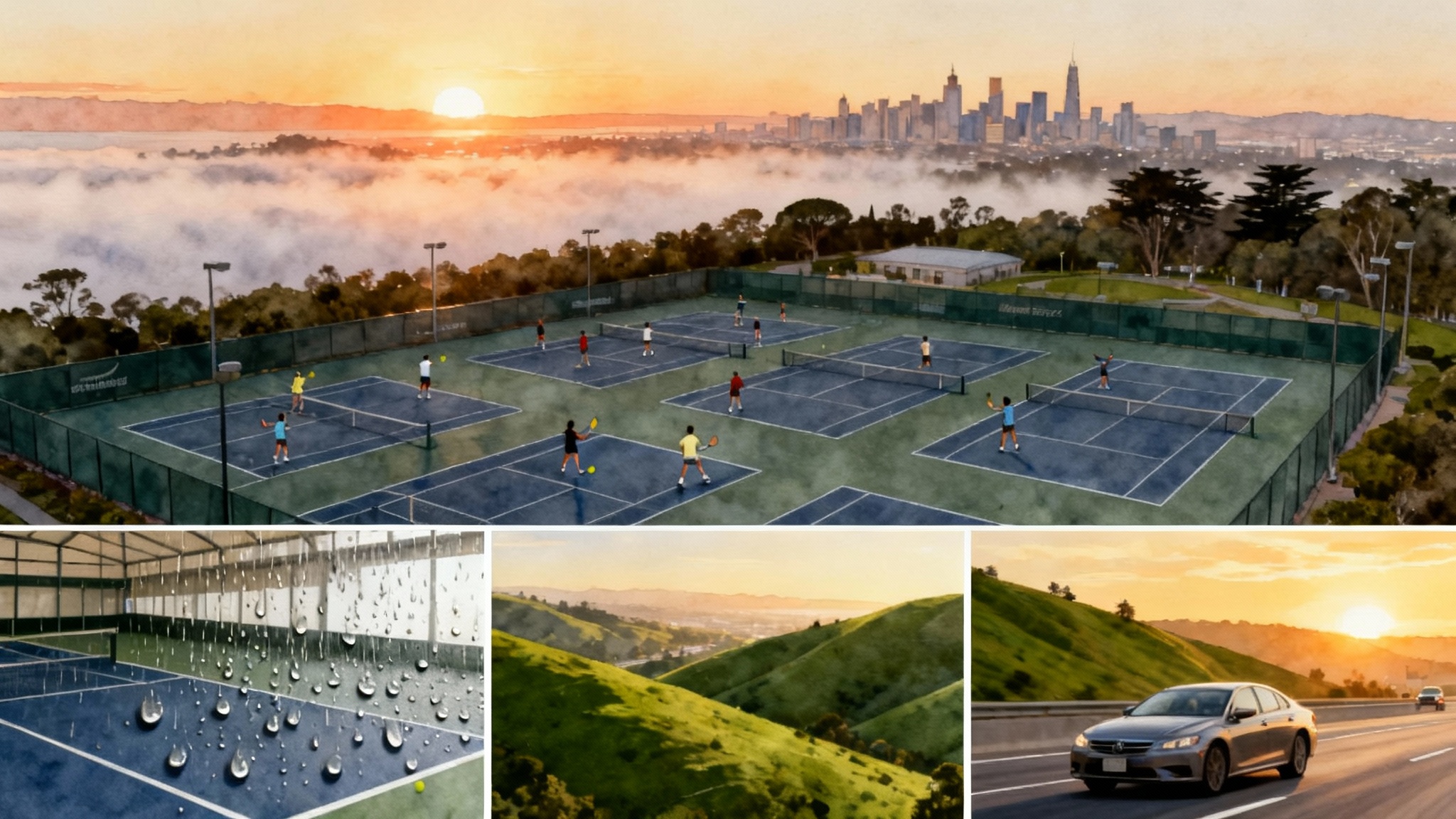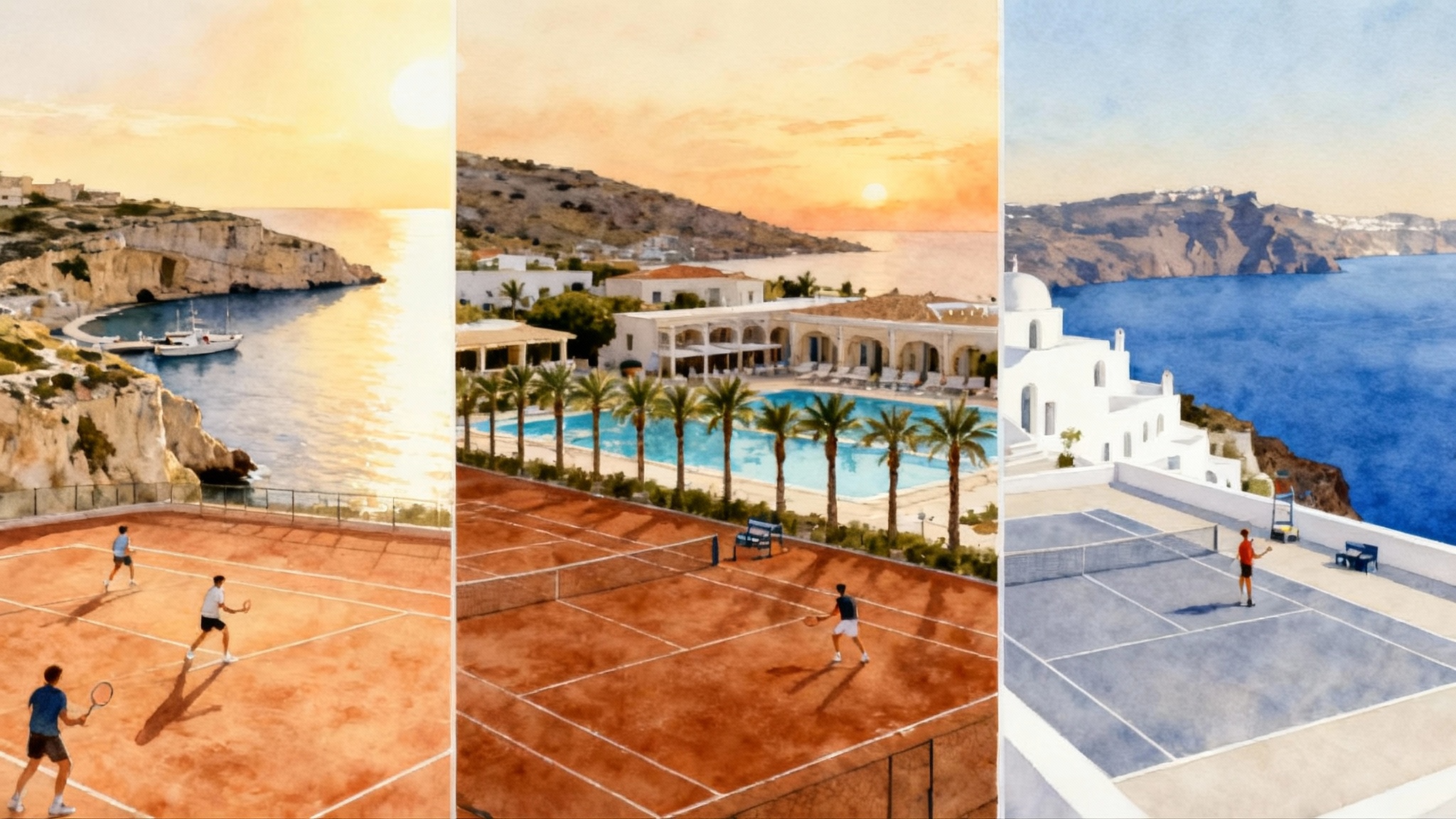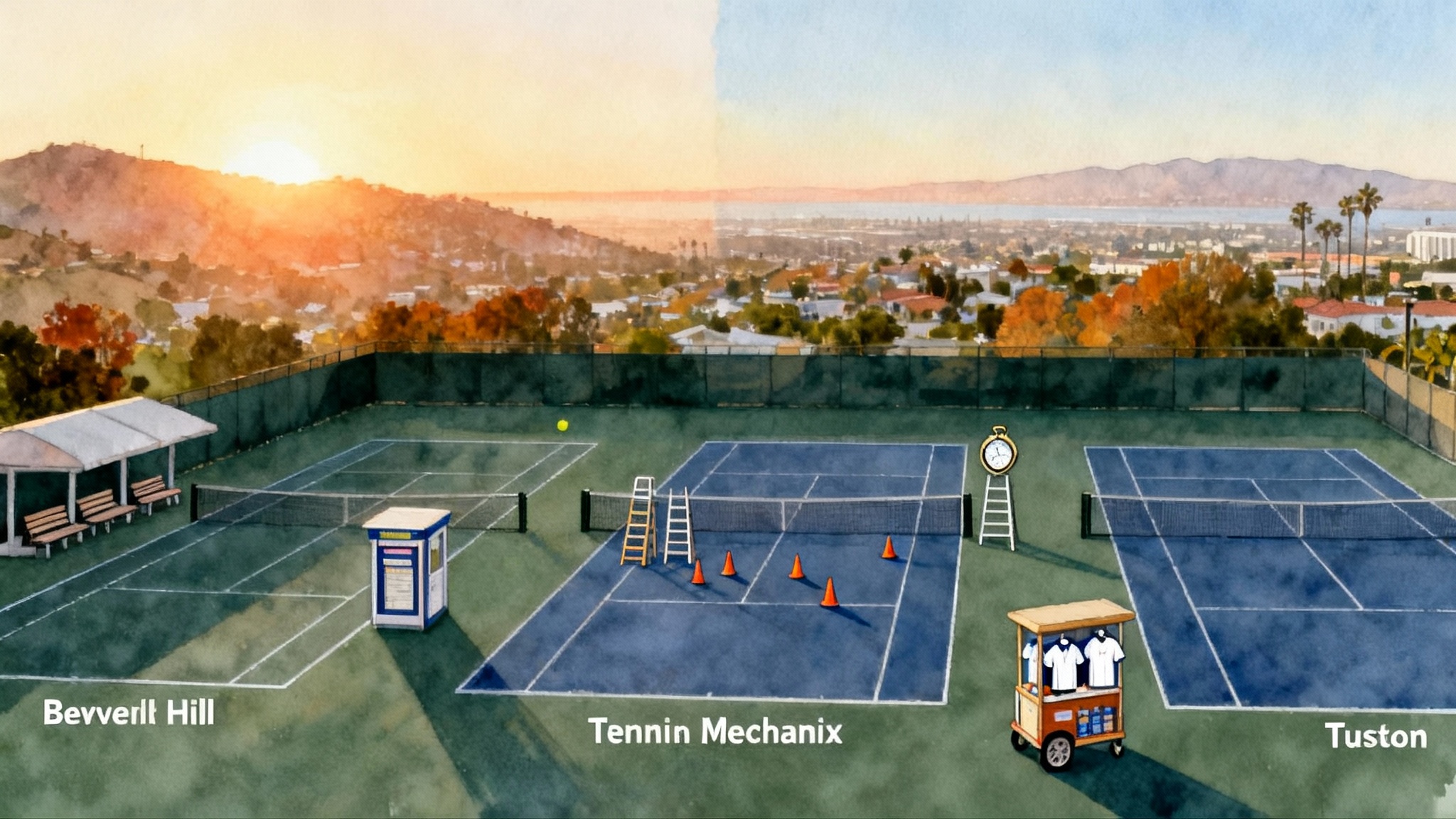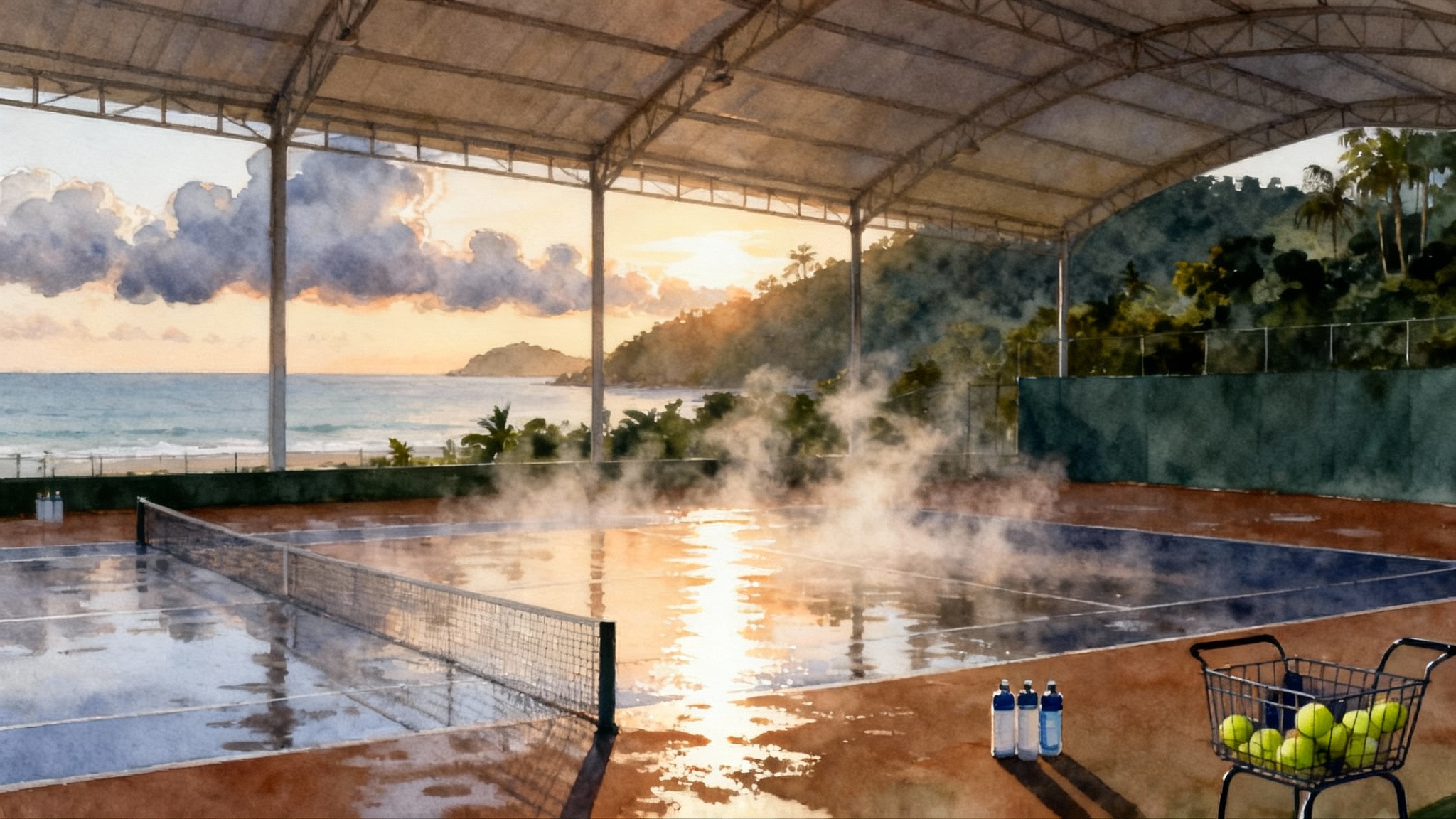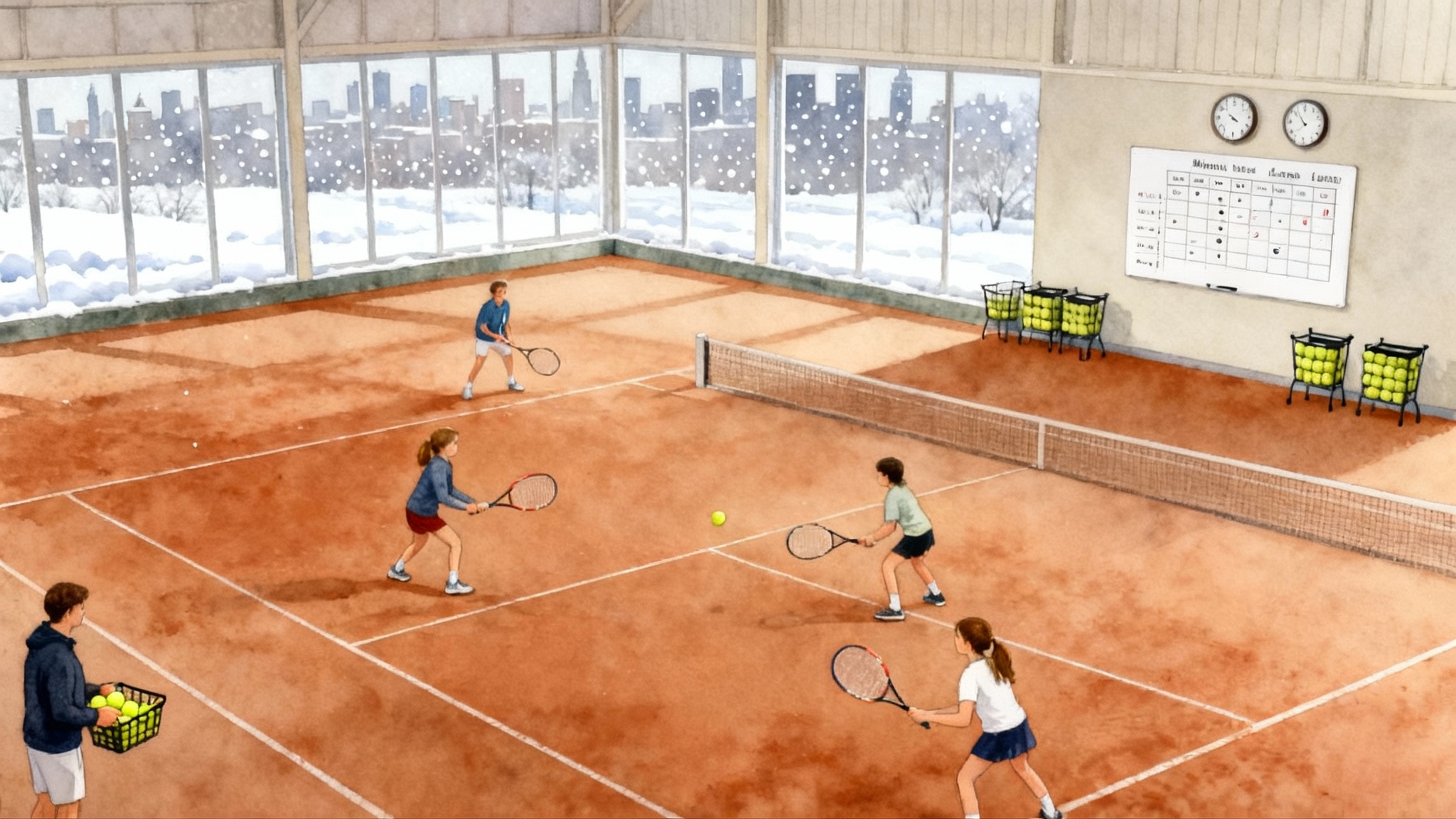Emilio Sánchez vs Ciudad de la Raqueta: 2025–2026 Guide
A head-to-head comparison of Emilio Sánchez Academy in Barcelona and Ciudad de la Raqueta in Madrid for juniors. Training systems, surfaces, academics, boarding, tournaments, climate, logistics, weekly costs, alumni, and decision rubrics.

The quick verdict
If your junior needs a fully integrated school plus boarding with a proven Spanish training method, Barcelona’s Emilio Sánchez Academy is the safer turnkey choice. If you want a flexible, club-driven setup in a capital with heavy tournament traffic and you plan to manage academics and housing yourself, Madrid’s Ciudad de la Raqueta can be an efficient hub with strong sparring depth and lower baseline costs. The right fit depends on age, goals, and how much structure your family wants the academy to provide.
- Explore academy profiles: Emilio Sánchez Academy Barcelona and Ciudad de la Raqueta Madrid.
Training systems and coaching
Emilio Sánchez Academy (Barcelona)
- System: The “Sánchez” approach builds heavy topspin, patterns, and footwork economy on medium to high volume, usually beginning on clay before layering in hard-court speed. Emphasis falls on direction control, height, and depth before pace. Movement blocks include cross-step recovery, open-stance defense, and transition patterns that convert defense to offense.
- Coaching model: Stable teams with daily plan review. A typical week mixes technical themes in the morning and live ball plus points in the afternoon. Fitness focuses on multi-directional acceleration, elastic strength, and shoulder health. Mental training and match charting are structured, not ad hoc.
- Mentorship and alumni signal: The program’s track record includes pros who trained there as juniors or during formative years, which attracts a steady stream of quality sparring. That alumni gravity matters for 16+ athletes who need older, faster hitters.
- Useful starting point: Review program menu, school integration, and boarding options on the academy’s own Barcelona program overview.
Ciudad de la Raqueta (Madrid)
- System: Ciudad de la Raqueta is a large, modern club and event hub rather than a single-brand academy. High-performance groups run with in-house and partner coaches. Families can customize hours, add private lessons, and select specific coaches, but quality varies by group and scheduling.
- Coaching model: Expect a mix of clay and hard sessions with flexible add-ons such as video analysis, fitness blocks, and tournament coaching. The best results come when families set a written plan with the coaching lead, then check progress weekly.
- Competitive ecosystem: As a major Madrid venue, the club attracts strong juniors and open-level hitters. It often serves as a meeting point before and after local RFET events, which means frequent match play and practice sets.
- Useful starting point: Check current groups, camps, and events on the club’s own Ciudad de la Raqueta programs.
Clay vs hard-court balance and how it shapes players
- Emilio Sánchez Academy: Majority clay with a meaningful hard-court presence. Younger players learn height, spin, and court craft on clay, then translate to hard courts with earlier contact and flatter finishes. The outcome is a patient baseliner who can finish points when the ball sits up. For aggressive juniors, coaches will push inside-the-baseline patterns to avoid over-defending.
- Ciudad de la Raqueta: Broad access to both surfaces within a single club setting. Madrid’s altitude and drier air help the ball travel and reward early preparation. Players learn to defend on clay and attack sooner on hard courts. The outcome is a more pace-forward style, provided the athlete commits to first-strike patterns on faster days and to spin control on heavier clay days.
Academics and boarding vs day-student structure
- Emilio Sánchez Academy: On-campus American curriculum via an integrated school, with boarding, study hall, and transport handled within the same ecosystem. That reduces friction for families relocating for a semester or full year. It suits 10–12 athletes who need adult supervision, 13–16 college-bound students who must manage transcripts, and 16+ players who want a stable daily rhythm with fewer logistical surprises.
- Ciudad de la Raqueta: Day-student model. Families organize schooling through local international schools, online programs, or hybrid solutions. Housing is off-site via apartments, homestays, or hotels. This is attractive for older teens and for families living in or near Madrid. It offers freedom and often lower total cost, but parents or a local guardian must coordinate schedules, transport, and academics.
Tournament access: RFET, ITF, and UTR
- RFET pathway: Both Barcelona and Madrid run dense calendars of Spanish national and regional tournaments across age groups. Catalonia and the Community of Madrid each offer deep draws most weeks of the year, which keeps match volume high without long travel.
- ITF World Tennis Tour Juniors: Spain hosts abundant Grade 1 to Grade 5 events throughout the calendar. From either city, driving or short flights cover many events in Spain, Portugal, and southern France. Players can build their first ranking with limited international travel.
- UTR events: Frequent weekend UTR match play exists around both hubs. This fills gaps between RFET and ITF weeks and provides flexible rating-based competition for development and college recruiting.
Tip: Ask each program to provide a three-month competition map that stacks RFET weekends, targeted ITFs, and UTR blocks to minimize missed school days.
Climate, travel, and logistics
- Climate: Barcelona’s coastal Mediterranean weather is mild, with more humid days and fewer deep freezes. Madrid is drier, with hotter summers and colder winters. Both train outdoors year-round, but Madrid may need occasional morning cold adjustments in midwinter while Barcelona may handle more light rain days.
- Travel: Madrid Barajas is Spain’s largest international hub with many long-haul nonstops. Barcelona El Prat also has strong European coverage and select intercontinental routes. For families commuting from the Americas or the Middle East, Madrid often offers simpler itineraries. For families in Europe, both cities are convenient with plentiful low-cost flights.
- Living rhythm: Barcelona’s coastal neighborhoods and the academy’s campus-style setup suit younger boarders. Madrid’s urban scale suits self-directed teens who like a big-city feel and more independent movement from school to courts.
What it costs in 2025–2026
Prices vary by season, program length, room type, and add-ons such as physio, match coaching, and private lessons. The ranges below reflect typical published rates and family quotes for 2024 to early 2025, with a reasonable cushion for 2025–2026 updates. Always request a written offer.
-
Emilio Sánchez Academy, Barcelona
- Weekly high-performance training, day student: roughly €700 to €1,100 per week depending on age group, hours, and season.
- Weekly boarding packages: roughly €1,350 to €2,200 per week including housing, meals, group fitness, and most on-court blocks. Private lessons, physio, and tournament coaching are usually extra.
- Semester or annual with school and boarding: commonly €45,000 to €65,000 per academic year depending on grade, room type, and services.
-
Ciudad de la Raqueta, Madrid
- Weekly group training as a day player: roughly €250 to €600 per week for high-performance blocks. Private sessions often €40 to €80 per hour.
- Housing off-site: budget €450 to €900 per week for homestay or hotel-apartment options near the club, including meals. Families who lease apartments long term can reduce that.
- Tournament coaching: day-rate add-ons apply, often shared across athletes in the same draw.
Currency note: If you budget in dollars, add a buffer for exchange swings and bank fees. For short stays, assume an extra 5 to 10 percent margin.
Sample weekly plans
Emilio Sánchez Academy, boarding student, age 13–16
- Monday to Friday
- 07:00 Breakfast and mobility
- 08:00 to 10:00 Technical theme on clay: height and depth control, forehand patterns
- 10:15 to 11:15 Strength and conditioning: acceleration, trunk stiffness, shoulder care
- 11:30 to 13:30 Classes with academic advisor check-in
- 14:30 Lunch
- 15:30 to 17:30 Live ball and points on hard courts: first-strike patterns, serve and plus one
- 18:00 to 19:00 Study hall or video review
- 21:30 Lights out
- Saturday
UTR match play or RFET draw; light recovery - Sunday
Off-court day, recovery, family calls
Ciudad de la Raqueta, day student, age 16+
- Monday to Friday
- 08:00 to 09:00 Classroom or online school block
- 09:30 to 11:30 Group practice on clay: heavy-ball consistency, defense to offense
- 12:00 to 13:00 Fitness: speed and agility, posterior chain strength
- 13:30 Lunch
- 15:30 to 17:00 Hard-court session: serve patterning, return plus two
- 17:15 to 18:00 Optional private lesson or targeted basket on backhand return
- 18:30 Recovery and planning for weekend matches
- Saturday to Sunday
RFET or UTR competition, coach check-ins between rounds
Checklists you can use on your visit
Coaching and planning
- Ask for a written weekly plan with named coaches and court blocks.
- See a real match chart from a recent tournament and the action plan that followed.
- Confirm who travels to tournaments and what the per-day coaching fee covers.
Fitness and injury prevention
- Demand a screening report: mobility, asymmetries, shoulder external rotation, jump asymmetry.
- Ask how strength progresses across a 12-week cycle and how loads adjust during tournament weeks.
- Verify recovery options: ice, compression, physio access, and return-to-play protocol.
Schooling and supervision
- For boarders: meet the dorm head and the academic coordinator. Confirm study hall hours, tutoring, and transcript process.
- For day students: map school commute, lunch windows, and transport to late practices.
Surfaces and match play
- Confirm the weekly split across clay and hard and how that aligns with the next three tournaments on the calendar.
- Watch one full live-ball session to check pace, coaching density, and player level.
Budget scenarios to reality-check your plan
-
One week, 13–16 boarder, Barcelona
- Training and boarding package: €1,600
- Two private lessons: €140
- Tournament coaching day fee: €120
- Airport transfers and extras: €140
- Estimated total: €2,000
-
One week, 16+ day player, Madrid
- Group training: €450
- Three private hours: €180
- Shared tournament coaching: €80
- Apartment and meals: €650
- Local transport: €60
- Estimated total: €1,420
-
One term, 13–16 college-bound, Barcelona
- Twelve weeks boarding with school: €18,000 to €24,000
- Extras and travel buffer: €2,000
- Estimated total: €20,000 to €26,000
-
One term, 16+ pro-aspiring, Madrid
- Twelve weeks group training: €3,600
- Weekly private sessions: €2,000
- Apartment share and meals: €4,200
- Tournament travel and coaching: €1,800
- Estimated total: €11,600
For more cost-planning context, see our regional overview in the Best Florida tennis academies guide.
Decision rubric by age and goal
Use this quick rubric to choose a hub and program structure.
Ages 10–12, development first
- Choose Barcelona if:
- You want on-campus school and boarding with close supervision.
- You value a consistent daily method on mainly clay with controlled exposure to hard courts.
- Your child needs a single point of contact for academics, training, and wellness.
- Choose Madrid if:
- A parent or guardian can coordinate school, transport, and meals.
- Your child thrives in a busy club environment with rotating hitters and coaches.
- You live in or near Madrid, reducing housing costs and transitions.
- Action step: Demand a two-week trial plan. For Barcelona, request homeroom and dorm placement in writing. For Madrid, pre-book a clear training block plus one private session each day to anchor the week.
Ages 13–16, college-bound track
- Choose Barcelona if:
- You need transcripts in an American curriculum with counselor support.
- You want a defined pathway of RFET, UTR, and selected ITF events without losing class time.
- Your athlete benefits from the guardrails of boarding, study hall, and on-campus meals.
- Choose Madrid if:
- You can line up an international school or online curriculum and a reliable guardian.
- You want strong match volume, lower fixed costs, and the ability to redirect budget to private lessons, data, and travel.
- Your athlete is independent and already self-manages warm-ups, recovery, and study blocks.
- Action step: Build a 90-day calendar that locks in three RFET weekends, two UTR events, and one ITF. Share it with coaches and ask for periodization notes.
Ages 16+, pro-aspiring
- Choose Barcelona if:
- You want stable, high-density practices with older hitters and structured fitness.
- You prefer fewer variables during an exam or points-chasing window.
- Choose Madrid if:
- You want access to a wide practice pool and the flexibility to spike private hours before events.
- You plan to base out of a capital city with easy flights to Futures and Challengers.
- Action step: Track serve speed, forehand pace, and break-point conversion for four weeks. Choose the hub where those metrics move first and fastest, then commit for a full cycle.
Alumni outcomes and what they mean for you
- Emilio Sánchez Academy: The alumni list and visiting pros create a culture of professionalism. Younger players see older role models daily. For families aiming at United States college tennis, the transcript support and video packages simplify recruiting.
- Ciudad de la Raqueta: As a leading Madrid venue, it funnels players through national events and strong local leagues. The constant churn of tournaments means frequent sparring upgrades and practical match experience for rating and ranking progress.
How to lock the decision
- Request a two-week trial from your top choice and a one-week micro-trial from the runner-up. Use the same player goals and test the same metrics in both places.
- Compare the written training plans, not the marketing pages. Who names the theme for each session, the coach on the court, and the intended match transfer?
- Add a contingency. If your player gets injured or overloaded with school, which hub adapts faster and keeps motivation high?
For additional European context, you can also explore our Italy academies comparison.
Bottom line
Barcelona’s Emilio Sánchez Academy offers an all-in-one campus where tennis, school, and boarding live under one roof. Madrid’s Ciudad de la Raqueta offers a powerful club ecosystem where you assemble the pieces and direct the spend. Younger or college-bound athletes usually benefit from Barcelona’s structure. Independent teens and pro-leaning players who want flexibility and tournament density often thrive in Madrid. Visit both if you can, run the same week in each, and let the performances and the daily rhythm make the choice for you.

